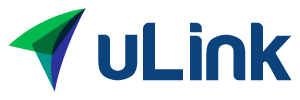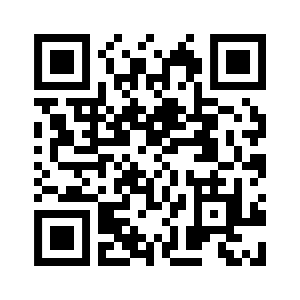
Building a retirement nest egg is never easy. It takes discipline and dedication to save money, especially when times are tough.
Retirement can seem even more daunting for immigrants in the United States, where the cost of necessities like food, utilities, and rent are high.
Fortunately, a 401(k) can help make retirement much more attainable. When used strategically, your 401(k) can empower you to save money in a quick and prosperous way.
Ready to get started? Read on to learn everything you need to know about opening a 401(k).
What Is a 401(k)?
A 401(k) is a tax-advantaged retirement savings plan.
Most 401(k) plans are sponsored by American employers. However, if you are self-employed, you can still open a Solo 401(k) on your own.
When employees participate in their company’s 401(k) plan, they agree to have a small percentage of their paycheck distributed into an investment account.
That money is immediately invested in the stock market. Most 401(k) plans offer a curated list of mutual funds and other investments, which you can customize after opening an account.
Many employers also match employee contributions, up to a certain percentage of your salary. For each dollar you save in your 401(k), your employer will match some—or even all—of your contribution. The national average 401(k) match hovers between 3-5%, according to the U.S. Bureau of Labor Statistics.
This is a popular perk in a competitive job benefits package. After all, a 401(k) match program is essentially free money for employees.
In 2023, the maximum 401(k) contribution for individuals is $22,500. However, if you are age 50 or older, you can contribute up to $30,000.
Traditional 401(k) vs. Roth 401(k)
There are two types of 401(k)s to consider: a traditional 401(k) and a Roth 401(k).
With a traditional 401(k), any money that comes out of your paycheck is deducted before taxes. As a result, your taxable income will be directly reduced by your 401(k) contributions.
This could lower your total tax obligations and, come tax season, even increase the likelihood of getting a refund from the IRS.
While your money grows tax-free in a traditional 401(k), you will be taxed at your ordinary income level whenever you make a withdrawal.
Because a traditional 401(k) is a retirement savings vehicle, most withdrawals made before the age of 59 and a half will be levied hefty penalties. Starting in 2024, however, some plan participants will be able to leverage “hardship withdrawals” and access up to $1,000 for emergency needs.
Conversely, Roth 401(k) contributions are deducted from after-tax income.
Because the taxes are paid up-front, withdrawals made in retirement are entirely tax-free—no matter how much they grow.
And unlike with traditional 401(k), you can take money out of your Roth 401(k) after you’ve held the account for just five years, even if you’re under the age of 59 and a half.
Benefits of a 401(k)
Ultimately, both traditional and Roth 401(k)s offer many amazing benefits.
Choosing between the two depends on your income level, your financial timeline, and your unique retirement needs. If you’re unsure, you can always get in touch with a financial advisor.
These are the three core benefits of having a 401(k):
1. Major Tax Advantages
With a traditional 401(k), you can lower your taxable income for the year.
For example, if you make $50,000 per year and put $2,500 in your traditional 401(k), your taxable income will be $47,500.
In other words, a traditional 401(k) can save you money while making you money.
With a Roth 401(k), your tax benefits are simply deferred.
After growing in the stock market for a number of years (or even decades), you position yourself to earn a significant profit and withdraw it tax-free.
2. Free Money
If your employer offers a 401(k) match, they’re essentially providing you with free money.
After all, a 401(k) match is like rocket fuel for retirement.
Take advantage of your company’s matching program, and max out your savings as much as you can. If you’re not offered the program organically, don’t be afraid to ask them.
3. Convenience
While it’s difficult to save money, a 401(k) can help streamline the process.
Here’s why: after you set your contribution amount, you don’t have to worry about it anymore.
In fact, the money will come out of your paycheck before you even see it—and if it’s a traditional 401(k), even before the IRS sees it!
Saving money gets easier when it’s automated, and a 401(k) provides that convenience.
Bonus: High Contribution Limits
401(k)s also have great contribution limits, especially compared to other competing retirement plans like IRAs, which cap out at just $6,500.
As a reminder, you can put up to $22,500 in your 401(k) each year—or $30,000 if you’re over the age of 50. Those numbers will likely increase in 2024 and beyond.
Keep in mind, all of that money is going to work in the stock market, where compound interest can turn modest savings into a nice payday.
Why Should Immigrants Consider a 401(k)?
Financial literacy is a huge problem for many people in the U.S. In fact, almost 40% of the U.S. population doesn’t know what a 401(k) is.
But don’t shy away from a 401(k), as it’s a powerful savings plan—especially for recent immigrants.
For one thing, a 401(k) is employee-sponsored, so you won’t have to do a bunch of frustrating
research to start the process. Better yet, your employer has already customized the available investments, so you don’t have to do the heavy lifting yourself.
In many ways, a 401(k) acts as an educational introduction to the financial world, but without the high risk factors associated with day trading or individual investing.
Of course, a 401(k) encourages financial literacy while achieving its most promising function: promoting savings and actively growing your personal wealth.
It’s the #1 retirement vehicle for a reason, and immigrants of all ages stand to benefit from opening a 401(k).
How to Open a 401(K)
In many cases, your employer will automatically sign you up for the company 401(k), especially
if you’re a new hire.
Sometimes, new hires are required to wait before enrolling in the company 401(k) plan. If that’s the case, just set a reminder for the day you’re allowed to open an account.
Your HR department should be able to answer any questions related to your eligibility.
After you’re officially signed up, be sure to follow the next five steps:
1. Decide How Much to Contribute
This is the hardest part of the process.
With many competing expenses, how much can you confidently contribute to your 401(k)?
While only you can answer that question, remember that your 401(k) is safeguarding your financial future. It’s the gateway to your retirement.
However much you decide to contribute, commit to as much as you can, and steadily increase that number as your salary (or total income) grows.
2. Select an Account Type
While traditional 401(k)s are standard, some employers may also offer a Roth 401(k)—choose the option that fits your financial situation.
As you decide the best course of action, keep in mind that the IRS allows you to save money in both types of 401(k)s.
So if you move to a new company in a few years, you can open a new 401(k) and further diversify your investments.
In other words, you can have the best of both worlds.
3. Choose Your Investments
Typically, you won’t be able to invest in individual companies through a 401(k). For example, you won’t be able to buy a bunch of shares of Apple or Nike.
Instead, most sponsored 401(k) plans offer 10 to 20 mutual funds or exchange-traded funds (ETFs).
In most cases, your company will have a default investment option. If you want to set it and forget it, that may be the most compelling option.
However, if you want to get involved in the details, you can customize your investment choices as much as you want.
As always, do your research, and consult a financial advisor if you have any questions.
P.S. Need a good place to start your research? Check out Morningstar, a respected investment research firm that lists each fund’s fees, weighting, and performance.
4. Beware of Investment Fees
As you select your investments, be sure to avoid any mutual fund that charges over 1% in fees.
Such fees have many names, including “expense ratios” and “management fees.”
However they’re named, do your best to avoid them, as they represent the biggest recurring threat to your investment returns.
5. Max Out Your Employer Match
You’ve come this far. Now, it’s time to set yourself up for sustained success.
In some cases, you may need to contribute a certain amount of money to unlock your employer match.
Once you cross that threshold, go all the way and max out your employer match. Your future self will thank you.
Moving Forward
By opening a 401(k), you can build a financial bridge between today and tomorrow.
As you contribute to your account, you’ll steadily strengthen your financial future and pave the way for a truly rewarding retirement.
And no matter what you choose to do with your 401(k), at uLink we’re fully dedicated to your continued success.
That’s why we offer great exchange rates and fees as low as $0: so you can send more money home than ever before.
Miles from home—just moments away with uLink.









